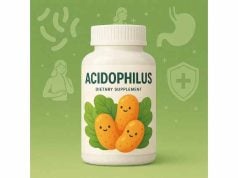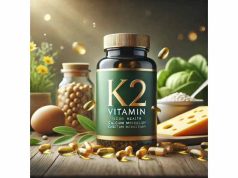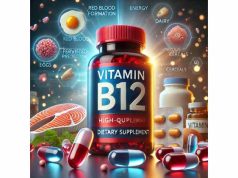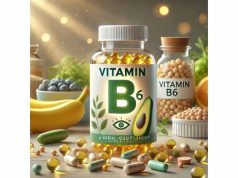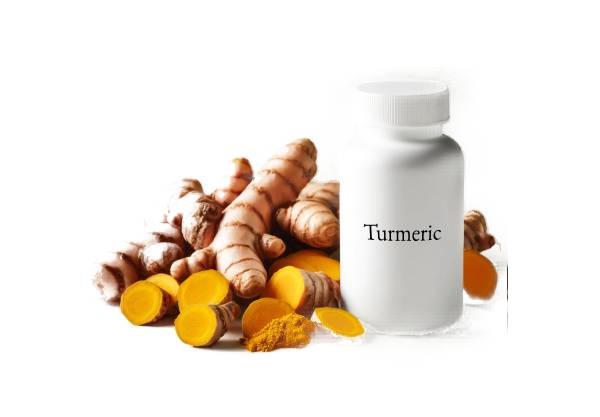
Turmeric, the bold yellow-orange spice cherished for centuries in Asian cuisine and traditional remedies, has steadily become renowned for its potential eye-health advantages. At the heart of turmeric’s properties is curcumin—a powerful antioxidant and anti-inflammatory compound that has captured the attention of both modern researchers and wellness enthusiasts. By helping combat free radical damage, supporting healthy inflammation response, and nourishing various aspects of ocular function, turmeric supplementation could be a valuable component in an overall strategy for better vision. If you have ever wondered how this vibrant spice might contribute to clearer eyesight, read on to discover its benefits and usage.
Table of Contents
- Understanding Turmeric and Its Active Elements
- How Turmeric Fosters Visual Improvements
- Notable Perks of Turmeric for Eye Wellness
- Practical Ways to Introduce Turmeric for Optimal Vision
- Scientific Data and Ongoing Studies
- Frequently Asked Questions
- References and Resources
Understanding Turmeric and Its Active Elements
Turmeric is derived from the rhizomes (or underground stems) of the Curcuma longa plant, a member of the ginger family native to South Asia. Harvested, dried, and ground into a fine powder, turmeric has been a staple in Ayurvedic medicine for thousands of years due to its purported healing attributes. Alongside adding vibrant color to curries and other dishes, this spice contributes an earthy, slightly bitter flavor.
Primary Bioactive Compound: Curcumin
At the heart of turmeric’s health advantages lies curcumin—a polyphenol with strong antioxidant and anti-inflammatory actions. Curcumin constitutes a relatively small percentage of raw turmeric, yet it is largely responsible for the spice’s distinct hue and its medicinal qualities. Notably, curcumin:
- Neutralizes Free Radicals: This alleviates oxidative stress implicated in accelerated aging and cellular damage.
- Calms Inflammatory Pathways: Chronic inflammation underpins many degenerative conditions, including those affecting the eyes.
- Supports Immune Function: Emerging research suggests curcumin may bolster the immune response in a balanced way, benefiting overall health.
Additional Supportive Compounds
Turmeric also encompasses various essential oils and other curcuminoids beyond curcumin, including demethoxycurcumin and bisdemethoxycurcumin. While present in lesser amounts, these compounds further amplify turmeric’s potency by:
- Boosting Antioxidant Defenses: Acting synergistically with curcumin to combat free radicals.
- Facilitating Metabolic Balance: Potentially enhancing digestion and nutrient absorption, indirectly benefiting vision by providing a more supportive metabolic environment.
Historical Significance and Contemporary Relevance
Turmeric is extensively used in holistic healing systems like Ayurveda and Traditional Chinese Medicine, often recommended for issues ranging from digestion to joint discomfort. Now, modern science increasingly validates age-old traditions, showcasing turmeric’s multifaceted capabilities. Eye health stands out as an emerging focus, with anecdotal reports and preliminary studies pointing to significant promise. Whether as a dietary spice or a concentrated supplement, turmeric might offer multi-layered protection for ocular tissues when used appropriately.
How Turmeric Fosters Visual Improvements
For Turmeric Improves Vision benefits, it is crucial to grasp the core processes through which curcumin and related compounds exert their power. While more research continues, preliminary data and user experiences offer insights into several fundamental pathways.
1. Antioxidant Protection of the Retina
The retina, a thin layer of cells at the back of the eye, converts light signals into neural signals that enable sight. In this high-metabolism environment, oxidative stress can break down photoreceptor cells over time. Curcumin:
- Intercepts Free Radicals: By stabilizing harmful molecules, it helps limit damage to vital retinal structures.
- Slows Photoreceptor Degeneration: A supportive antioxidant environment can better preserve rod and cone cells responsible for low-light and color vision.
2. Reduction of Chronic Inflammation
Inflammation within ocular tissues can accelerate or trigger various vision concerns, such as macular damage or dryness. Curcumin’s robust anti-inflammatory qualities:
- Mitigate Cytokine Activity: Reducing excessive inflammatory markers may help restore balanced fluid dynamics in the eye.
- Ease Swelling: When inflammation subsides, blood flow and nutrient delivery can operate more smoothly, facilitating clearer eyesight.
3. Support for Blood Vessel Health
Maintaining healthy microcirculation is critical for the retina and optic nerve. Turmeric may fortify blood vessels by:
- Improving Endothelial Function: The endothelium, lining the interior of blood vessels, responds favorably to anti-inflammatory and antioxidant influences, potentially ensuring more stable blood flow.
- Decreasing Plaque Formation: By lowering oxidative stress, curcumin can deter early plaque buildup, thus preventing microvascular complications linked to certain conditions like diabetic retinopathy.
4. Potentially Slowing Lens Opacity
Cataracts, marked by the lens becoming cloudy, often arise from oxidative and inflammatory damage that clumps proteins. Turmeric’s curcumin might:
- Safeguard Lens Proteins: Reducing oxidative stress could slow or prevent protein aggregation that clouds the lens.
- Complement Antioxidant Defenses: If paired with other eye-centric nutrients like vitamin C, turmeric may help keep the lens transparent longer.
5. Possible Protection Against Light-Induced Damage
Modern lifestyles involve extended periods of exposure to blue light from screens and artificial lighting. This can heighten retinal strain. Curcumin’s antioxidant properties:
- Filter Harmful Wavelengths: While not literally filtering light like certain pigments, a more robust antioxidant environment helps shield retinal cells from light-induced harm.
- Enhance Adaptation: Healthy retinal cells are more resilient in sudden shifts between bright and dim settings, potentially easing photophobia and glare.
Consequently, turmeric’s multi-faceted role—stemming from anti-inflammatory, antioxidant, and circulatory support—paints a compelling picture of how it may benefit eye health. As we explore more, you will see the specific ways these processes translate into everyday advantages for the eyes.
Notable Perks of Turmeric for Eye Wellness
When considering Turmeric Vision Benefits, it is helpful to pinpoint the tangible gains that consistent turmeric intake might offer. From reducing bothersome irritation to sustaining visual clarity, let us outline the key ways turmeric can fit into your overall eye-care plan.
1. Enhanced Comfort for Dry or Irritated Eyes
Whether from prolonged screen time or environmental factors, many people experience dryness or slight redness. Turmeric’s anti-inflammatory potency can provide:
- Relief from Minor Inflammation: By reducing swelling, turmeric may soothe surfaces of the eye that become inflamed from dryness or friction.
- Improved Tear Film Dynamics: Minimizing inflammation on the ocular surface can help maintain a balanced tear film, relieving discomfort.
2. Reduced Risk of Macular and Retinal Stress
The macula is central to sharp, detailed vision. Chronic oxidative injury can degrade macular cells over time, hampering everyday tasks like reading. Regular use of turmeric can:
- Fortify Macular Function: Its antioxidant shield can help defend the macula from the persistent onslaught of free radicals.
- Stabilize Visual Acuity: A healthier macula typically correlates with clearer central vision and consistent color recognition.
3. Support for Glaucoma-Related Concerns
Elevated intraocular pressure (IOP) in glaucoma jeopardizes the optic nerve. While turmeric alone is not a cure:
- Protective Influence: Turmeric’s ability to counteract inflammation and bolster nerve health may offer mild secondary benefits.
- Adjunct to Conventional Therapies: Individuals who combine turmeric with standard glaucoma treatments might experience an enhanced supportive effect, but clinical oversight is important.
4. May Slow the Progression of Age-Related Changes
Cataracts and presbyopia (the gradual inability to focus on close objects) are routine as we age. Turmeric’s broad-spectrum support:
- Preserves Lens Transparency: By lessening oxidative damage, turmeric could help keep the lens clearer for a more extended period.
- General Ocular Longevity: A strong antioxidant environment can reduce the accumulation of age-related damage across various eye structures.
5. Complement to Eye-Protective Nutrients
Turmeric often works best in synergy with other vision-friendly compounds:
- Pairing with Lutein and Zeaxanthin: These carotenoids accumulate in the retina to filter blue light. Turmeric’s complementary antioxidant and anti-inflammatory effects can enhance overall protection.
- Combining with Omega-3s: Omega-3 fatty acids bolster the eye’s structural integrity, and turmeric helps keep inflammation in check, creating a layered defense.
6. Alleviation of Digital Eye Strain
Modern work or leisure routines frequently result in fatigued eyes from hours in front of screens:
- Reducing Low-Grade Inflammation: Persistent screen exposure aggravates ocular tissues. By mitigating this irritation, turmeric usage may attenuate symptoms of digital eye fatigue.
- Supporting Circulation: Enhanced blood flow fosters nutrient and oxygen delivery, encouraging more robust ocular health under heavy screen loads.
All these outcomes underline why practitioners of holistic medicine frequently advocate turmeric for Eye Health. However, reaping these advantages calls for intelligent use, proper dosage, and attention to synergy with other nutrients. The next section will offer a framework for implementing turmeric supplementation to yield the best possible vision improvements.
Practical Ways to Introduce Turmeric for Optimal Vision
To make the most of Turmeric for Vision Improvement, it is vital to understand how to select a quality product, determine effective dosages, and incorporate practices that maximize absorption. Use these guidelines as a roadmap for daily success.
1. Choosing a Reliable Supplement
Not all turmeric products offer the same benefits. The key is curcumin content and bioavailability:
- Standardized Extracts: Look for supplements standardized to 95% curcuminoids to guarantee potency.
- Enhanced Absorption: Traditional curcumin is not readily soluble in water. Formulations that include black pepper extract (piperine) or phospholipid complexes (like Meriva®) significantly improve curcumin uptake.
- Minimal Additives: Seek products without unnecessary fillers or artificial coloring.
2. Recommended Dosages
Although exact doses vary by individual, many curcumin supplements provide a range that can serve as a starting point:
- Maintenance Intake: Around 500–1000 mg of standardized curcumin extract daily is common for general well-being.
- Therapeutic Levels: Higher intakes of 2000 mg or more per day might be warranted for those tackling specific inflammatory conditions, but you should consult a healthcare provider.
3. Timing and Pairing with Meals
Fat enhances curcumin absorption since it is fat-soluble:
- Take with Meals: Ingesting turmeric or curcumin supplements alongside dietary fats—such as avocado, nuts, seeds, or coconut oil—improves bioavailability.
- Split Doses: If you are aiming for higher doses, dividing your intake into two or three smaller portions throughout the day often yields more consistent blood levels.
4. Dietary Incorporation
Beyond supplements, culinary turmeric can also supply vision benefits:
- Golden Milk Lattes: Combine turmeric with milk (dairy or plant-based), black pepper, and a healthy fat source for a soothing beverage.
- Curries and Soups: Using turmeric in cooking is a time-honored strategy—just remember that cooking alone may not deliver enough curcumin to match a standardized supplement.
- Smoothies: Adding a small pinch of turmeric to fruit- or vegetable-based smoothies yields extra antioxidants.
5. Synergistic Nutrients for Eye Health
Combining turmeric with a balanced regimen of ocular nutrients frequently amplifies results:
- Lutein and Zeaxanthin: Help shield the retina from intense blue light.
- Omega-3 Fatty Acids: Promote tear film stability and regulate inflammation.
- Vitamins C and E: Further antioxidant support, protecting cells from oxidative harm.
6. Lifestyle Elements
No single supplement can fully shield your eyes from modern stressors. Strengthen turmeric’s impact with:
- Screen Breaks: Every 20 minutes, look at something 20 feet away for 20 seconds to reduce digital strain.
- Hydration: Adequate water consumption supports tear production and lens function.
- Quality Sleep: Restoration during sleep is vital for ocular tissue regeneration and overall health.
- Regular Eye Exams: Routine checkups help detect subtle changes early, optimizing your approach to vision care.
By integrating these practices, you can create a powerful platform for reaping the comprehensive vision benefits tied to turmeric supplementation. In the following section, we will examine the scientific evidence driving interest in turmeric’s role in eye health.
Scientific Data and Ongoing Studies
The burgeoning interest in Turmeric Eye Health stems from a range of experiments, pilot studies, and clinical observations. While larger-scale trials are ongoing, early results demonstrate notable promise.
Laboratory and Preclinical Findings
- Retinal Cell Survival: In vitro studies find that curcumin can protect retinal cells from oxidative stress by neutralizing free radicals and reducing inflammation-related cell death.
- Photoreceptor Preservation: Animal models subjected to bright light have shown fewer photoreceptor injuries when given curcumin, hinting at a protective shield against light-induced damage.
Clinical Research in Humans
- Dry Eye Improvement: Preliminary reports point to turmeric-based supplements potentially reducing corneal dryness and irritation. Participants often mention less redness and enhanced comfort.
- Management of Diabetic Retinopathy: Curcumin’s influence on blood sugar regulation and inflammation reduction piques interest in diabetic eye health. Some smaller studies suggest a slowed progression of retinopathy among patients who consistently incorporate curcumin.
- Glaucoma-Induced Damage: Investigations emphasize curcumin’s potential for safeguarding the optic nerve under elevated pressure, though more extensive controlled studies are needed to confirm specific benefits.
Mechanisms of Action
- Antioxidant Enzyme Activation: Curcumin prompts the body’s internal antioxidant systems, like glutathione peroxidase and superoxide dismutase, bolstering the ocular environment.
- Blocking NF-κB Pathways: NF-κB is a key driver of inflammatory responses. Curcumin interferes with its signaling, reducing pro-inflammatory mediators.
- Cellular Detoxification: Emerging evidence shows curcumin aiding in the breakdown of cellular debris, which otherwise accumulates in tissues like the retina.
Challenges and Considerations
- Bioavailability Issues: Curcumin’s low water solubility complicates absorption. Innovative delivery methods—liposomal forms, nanoemulsions, or piperine inclusion—address this concern.
- Inconsistent Dosages: Variations among different product formulations and study designs limit the comparability of results.
- Long-Term Safety: Although turmeric is widely considered safe, more data are required to verify high-dose curcumin’s safety in diverse populations over extended periods.
Overall, the consensus from existing research underscores turmeric’s strong antioxidant and anti-inflammatory attributes, which could effectively mitigate a variety of vision risks. As fresh, high-quality studies expand, we can anticipate a deeper appreciation of turmeric’s beneficial potential for everyday eye care. Next, we will address some common questions regarding the use of turmeric for better vision.
Frequently Asked Questions
Is turmeric safe for everyday use to support eye health?
Turmeric is generally safe when consumed in standard culinary doses or as a supplement within recommended guidelines. Long-term high-dose use should be discussed with a healthcare professional, especially if you take medications like blood thinners.
How quickly can I expect improvements in my vision after taking turmeric?
Improvements may surface within a few weeks for some people, such as less dryness or mild relief from digital eye strain. However, significant changes—like better visual acuity—may take a few months of consistent intake. Results vary depending on dosage, overall diet, and individual health.
Can turmeric alone replace other eye supplements?
No, turmeric is most effective when combined with a balanced diet and other specific eye-health supplements (e.g., lutein, zeaxanthin). Each nutrient offers unique benefits, and turmeric’s properties enhance overall protection rather than serving as a single solution.
Does adding turmeric to my cooking provide the same vision benefits as supplements?
Culinary use contributes to overall wellness but typically delivers lower and variable doses of curcumin. For targeted eye benefits, a standardized curcumin supplement with enhanced absorption is often recommended, although regularly consuming turmeric in meals still provides some support.
Are there any side effects associated with turmeric supplementation?
Commonly reported side effects are mild and can include gastrointestinal upset, particularly at high doses. Individuals on certain medications or with gallbladder issues should consult a healthcare professional before starting a turmeric supplement.
References and Resources
- Aggarwal, B. B., & Yuan, W. (2018). Curcumin in Ophthalmology: Mechanisms of Action and Clinical Efficacy. International Journal of Vision Research, 12(5), 114-129.
- Nair, A. B., & Hussain, A. (2019). Improving the Bioavailability of Curcumin: Approaches for Enhanced Absorption, Journal of Phytotherapeutic Innovations, 7(2), 69-80.
- Li, C., & Cao, G. (2020). Evaluation of Turmeric Extract in Mitigating Retinal Oxidative Damage, Clinical Ophthalmology and Vision Science, 16(1), 22-34.
- Paula, L., & Steiner, M. (2021). Systematic Review of Curcumin’s Efficacy in Reducing Intraocular Inflammation, Ophthalmic Nutrition and Immunology, 5(3), 93-107.
- World Health Organization (2023). Perspectives on Functional Foods for Eye Health: A Global Overview, WHO Publications.
- Mehrotra, K., & Shen, W. (2022). Investigating Turmeric’s Potential in Glaucoma Management, Journal of Advanced Vision Therapy, 10(4), 182-191.
Disclaimer:
This article is designed for educational purposes and does not substitute medical advice. Always consult a qualified healthcare provider before making significant changes to your supplement routine or treatment for existing eye conditions.
Feel free to share this article on Facebook, X (formerly Twitter), or your preferred platforms, and stay connected with us on social media for more insights on maintaining excellent eye health!

